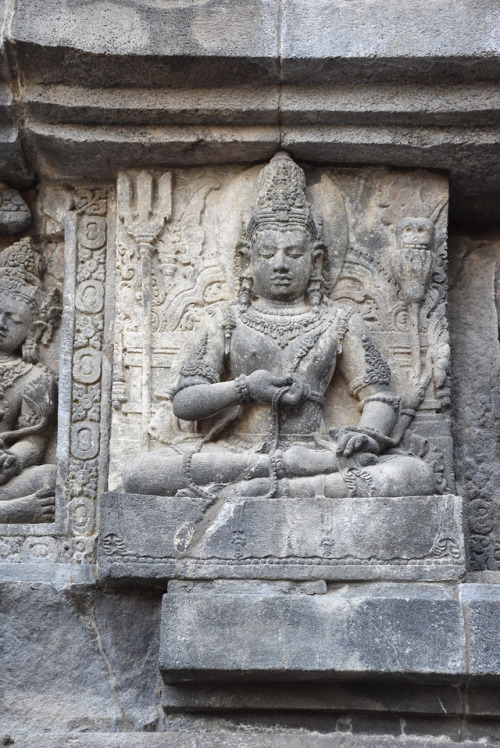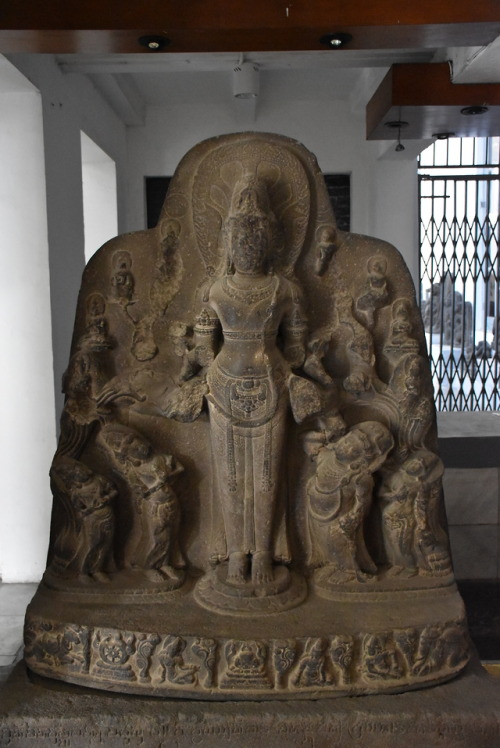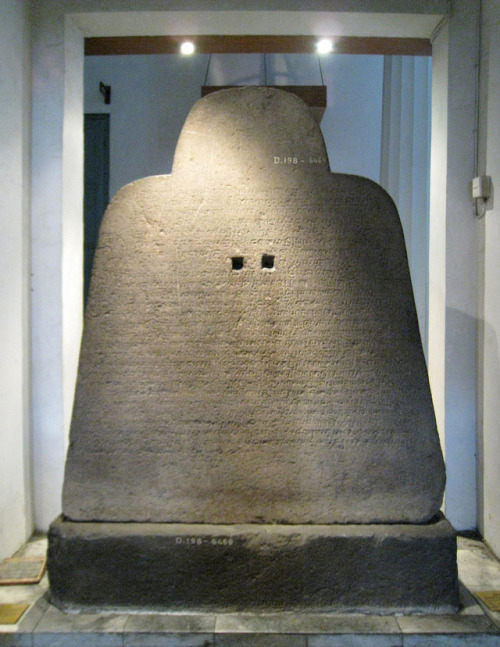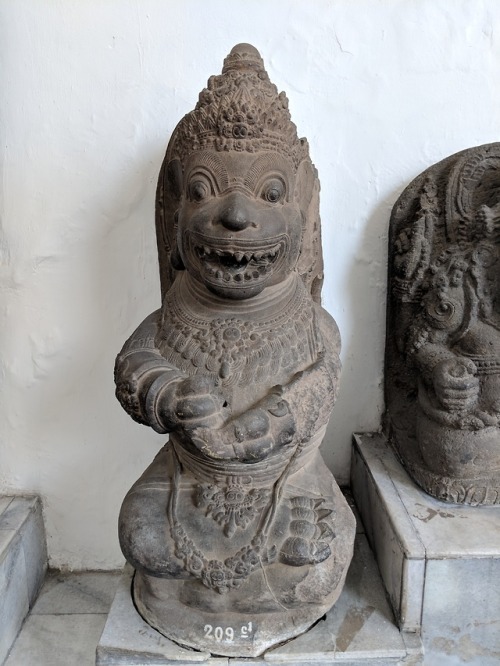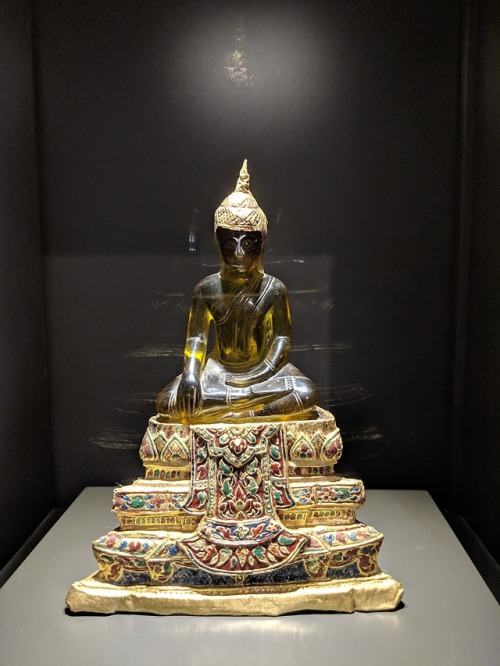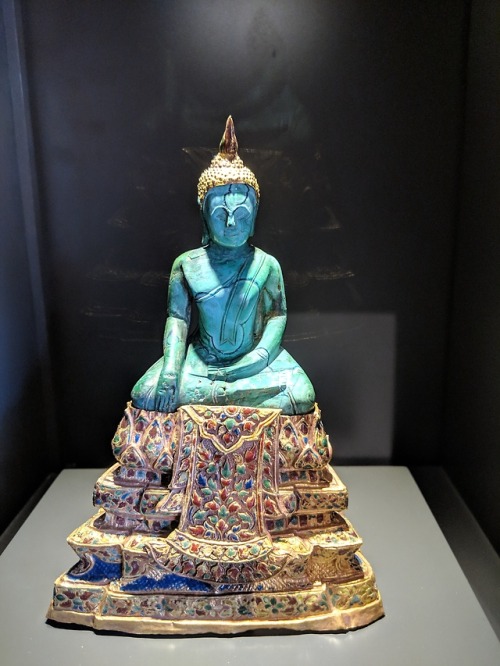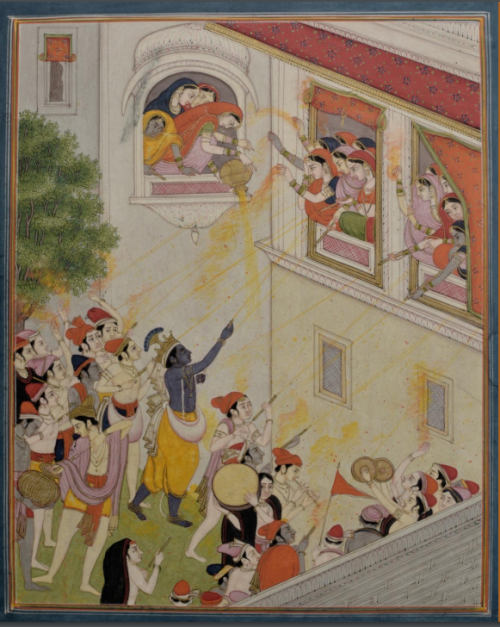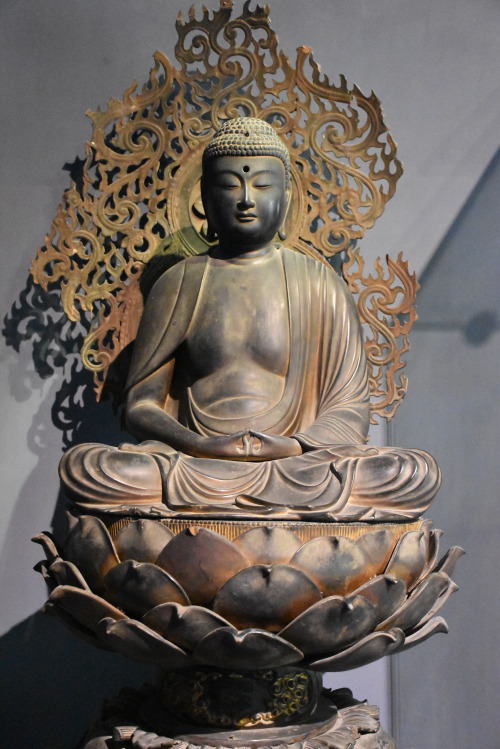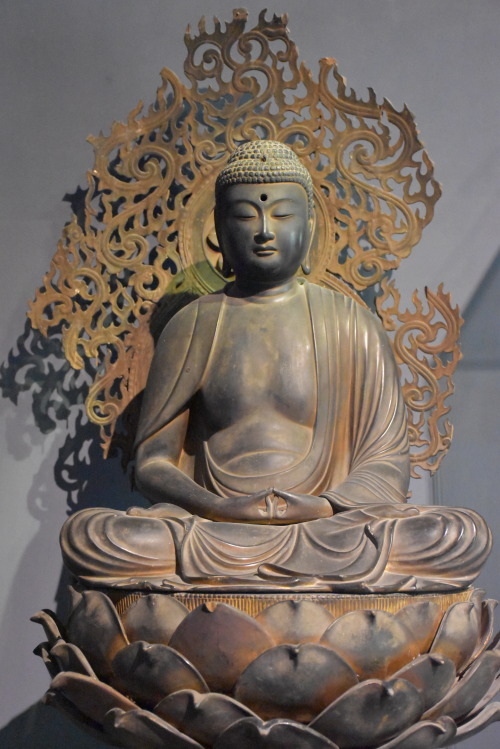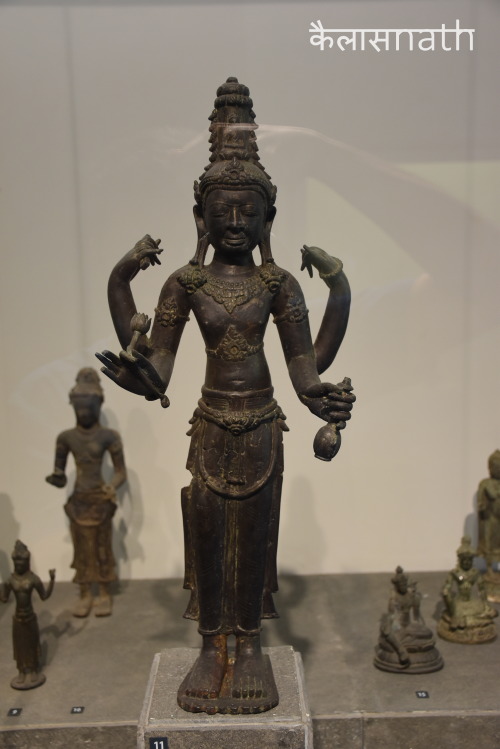#indic art
Īśāna – Lokapāla and Guardian of the Northeast
Relief on panel in the outer parikrama of the central temple dedicated to Lord Śiva in the great Trimūrtī temple complex of Prambanan, central Java.
Lokapālasor guardian deities of the cardinal directions is a concept common to Buddhist temple architecture. Īśāna is often associated with the Yakṣa Kubera – the Lord of Wealth and divine treasurer. Whilethetriśūla or trident is sometimes an attribute of Īśāna absence of vāhana is unusual.
The Prambanan Temple Complex was built Circa 850 CE by the Sanjaya Dynasty of Medang, Central Java
Post link
Bodhisattva Amoghapāśa
Great statue of Bodhisattva Amoghapāśa in the likeness of King Ādityavarman – proclaimed in the inscription on the back of the statue.
Singhasari Era, Sumatra, circa 1349 CE
National Museum of Indonesia, Jakarta
Post link
Bodhisattva Devī
ProbablySyāmatārā, East Jāvā, circa 13th Century CE
National Museum of Indonesia, Jakarta
Post link
Yoga – Nṛsimhadeva
NṛsimhaorNarasimha, the fourth avatāra of Lord Viṣṇu in the man-lion form.
Probably East Java, circa 13th Century CE
Post link
Buddha - Bhūmisparśa Mudrā
The Buddha in the gesture of touching the Earth, calling her as witness to defeat the forces of Mārāis probably the most popular image of the Buddha in Thai religious art. This set of Buddha icons in the Bhūmisparśa Mudrā made out of semi-precious stones set in gilded brass base thrones inlayed with semi-precious stones is a dazzling specimen of the most recent Royal Era of Thai history, the Rattankosin Era that began in the late Eighteenth Century after the destruction of Ayutthaya by the invading Burmese in 1747 CE.
These were made in the Royal workshops of Bangkok in the early 19th Century.
The National Museum, Bangkok
Post link



The daliances of Radha and Shri Krishna
Radha playfully mock whips Shri Krishna with her dupatta. Folio from Geeta Govinda manuscript - the second work on this theme - from Guler.
The second generation of masters after Manaku and Nainsukh, circa 1775 - 1780 CE
Pahari style, Guler
Collection of Horst Metzger
Krishna playing colour with the Gopikas
On occasion of Dhulwad - Dhuleti (धूळवड - धुलेटी), may the festival of colours bring joy and togetherness
Pahari Miniature, Kangra Style, circa 1800 CE
National Museum, New Delhi
Post link
GaruḍawithNāga
Garuḍa, the vahana or vehicle of Śṛī Viṣṇu, often depicted combatting serpents or nāgas, is a popular motif in south-east Asian Hindu sculpture. This magnificent and surprisingly well-preserved pediment is representative of Cham artwork in the collections of the Saigon Museum
Sandstone pediment, circa 10th Century CE
Museum of Vietnamese History, Saigon
Post link
Bodhisattva Avalokiteśvara – Bồ Tát Quán Thế Âm
The Indianised Hindu - Buddhistic Kingdom of Champa in what is today central Vietnam tracing its roots to the 2nd Century CE and lasting till the 1800s when it was completely absorbed into Modern Vietnam, reached it’s apogee in the 9th and 10th Centuries CE, which also saw the production of some exquisite religious art including this bronze image of the four-armed Avalokiteśvara.
Bronze, circa 9thCentury
Kingdom of Champa, Hoài Nhơn District, Vietnam
Museum of Vietnamese History, Saigon
Post link


